
Svalbard Circumnavigation: Ultimate Arctic Quest
A bucket list cruise opportunity to circumnavigate Svalbard and witness the beauty of the high Arctic and land of the polar bear.
A remote, rugged and inhabited archipelago deep in the Arctic Circle is the only thing that stands between the European mainland and the North Pole.
Administered by Norway but existing very much in a world all its own, Svalbard and its main island, Spitsbergen, are the ultimate springboards for Arctic cruises in Europe. Why? Because this is not only conveniently north of the Arctic Circle, but it’s also considered the ‘polar bear headquarters’ in this part of the world.
Famously home to more polar bears than people, Spitsbergen is both an entire Arctic destination of its own accord and a fabulous springboard for further explorations. From Svalbard wildlife cruises to comprehensive Arctic multi-country journeys that take in the best of Greenland and Iceland too, Spitsbergen offers a wealth of cruising options, whether you have 8 or 18 days at your disposal.
Svalbard has historically been the jumping-off point for polar explorations in the north, from the days of Wilen Barents (who accidentally discovered these islands in the 1500s) right up until the present day. Longyearbyen cruises (that’s Spitsbergen’s main town) are the most popular option for those who want to sail in the Arctic – partly because the Arctic wildlife concentration on this archipelago is phenomenal and partly because choices are extensive and prices competitive.
Spitsbergen may be renowned for its resident polar bears (over 3,000 are believed to live in these islands) but throughout the archipelago thrive a myriad of wildlife. On land, you can see Arctic fox, reindeer and thousands upon thousands of migratory sea birds whilst, on the seas between the islands, is where whales, walruses, several species of seals retreat to during the northern summer.
Spitsbergen cruises offer, by far, the most wide-ranging itineraries in the entire Arctic region and are widely considered to offer the best bang for your sailing buck.
The archipelago of Spitsbergen and Svalbard are located only 1,000km south of the North Pole and about the same distance from the northern Norwegian mainland. Directly west of it is the north-eastern coast of Greenland whilst, to the south-west, you find Iceland. As far as ‘location’ goes, in terms of Arctic cruising, Spitsbergen is the bees-knees: it is one of few inhabited places that’s close to the North Pole yet isn’t nearly as remote or isolated as some others, like Nunavut, in Canada. Spitzbergen certainly feels far removed from the rest of the world yet there are direct daily flights from Europe that last barely an hour. If anything, Spitsbergen feels a little surreal: so close yet so seemingly isolated.
The main town of Longyearbyen is the main port for Spitsbergen Arctic cruises and is conveniently connected to Europe, and the rest of the world, via direct flights from Oslo and Tromso. The town (and island) has been inhabited for centuries was the headquarters of both the whaling industry in the region (reached its peak in the 17th and 18th centuries), the Russian trapping wave (18th and 19th centuries) and, concurrently, the Polar expeditionary and scientific research which have been proceeding (practically non-stop) in the Arctic since the 1800s.
Longyearbyen is a fascinating place to check out for a couple of days and offers a phenomenal array of land-based excursions by foot and ATV, to visit abandoned Russian towns, research and whaling stations and a myriad of exceptional hiking and kayaking trips. When heading to Spitzbergen for an Arctic cruise, fight the urge to use Svalbard as a mere springboard: the island is worth a few days’ stay at the very least.
Cruises around Spitsbergen generally last between 8 and 12 days, the longer itineraries reserved for circumnavigating itineraries. When it comes to wildlife-watching value, it’s important to note that, if you hop on an Arctic expedition boat (ie. not only enjoy land-based adventures on Spitsbergen) your chances for animal spotting are high, no matter which cruise itinerary you choose. What matters in this incredible region of the Arctic is time: the longer you sail around the Svalbard archipelago, the higher your chances of spotting more (and different) species of Arctic wildlife. It really is that extraordinarily simple.
You’ll also find plenty of extended itineraries that start (or end) in Spitsbergen but go beyond the Svalbard peninsula. A Spitsbergen cruise + Greenland usually lasts about 15 days, whilst those which also cross the Denmark Strait to reach Iceland usually last about 18 days. The strait is renowned for being a migrating whale highway, so include an extra few days, if you can, and you’ll be handsomely rewarded.
Yes, indeed, a Spitsbergen circumnavigation cruise offers the most comprehensive experience of them all. As wildlife enriched as Svalbard may be, you do need to get off the inhabited island to have the highest chance of wildlife spotting, most especially in the heart of summer. By July, all the seals will have moved to the north-eastern islands and where there are seals, polar bears soon follow. These remote islands are only accessible by expedition ship and, given there are so many, all over the archipelago, a comprehensive circumnavigation itinerary is the only one that can deliver you to the best wildlife hot spots. Jaw-dropping fjords, sky-reaching glaciers, dramatic mountainous landscapes and an outstanding array of unique wildlife is what await you in Spitsbergen – a place where the longer you stay, the better life gets!
Since Spitsbergen is permanently inhabited and boasts an airport that is always operational, the island is considered a year-round destination. In winter, it attracts land-based adventurers who head here for extreme dogsledding and snowmobiling and the chance to spot the Northern Lights, although the island is a little too far north to offer very bright Aurora viewing.
Spitsbergen really comes to life from June onwards, however, when pack ice begins its yearly melt and Arctic expedition cruises can begin in earnest. Polar bear and other wildlife spotting are best done in summer, for the obvious reason (ie. there’s enough daylight for you to see them!) with July and August being the most ideal months. By then, the ice melt has been considerable and Spitsbergen Arctic cruises can sail further and explore the far north of the Svalbard archipelago, where at least 10 species of whales and countless walruses, seals and polar bears migrate to during the warmer months.
At the height of summer, you can expect every day to be drenched in plenty of daylight (24 hours of it in June/July) and daytime temps ranging between 5 and 7-degree-Celsius.
You sure can! Spitsbergen has a resident polar bear population that numbers in the thousands and this, coupled with all the land and marine mammals that reach it during the summer, make it one of the Arctic’s top 3 wildlife hubs. After Manitoba (Canada), Spitsbergen is considered the second-best place to see polar bears in the wild and given the island is much easier to reach than Manitoba, we’d call it the premier worldwide spot of all. Although you can spot a polar bear at any time in Spitsbergen, sightings mostly happen when touring by boat, simply because bears trawl the coastline and much of it is inaccessible (to humans) over land. Spitsbergen boasts less than 50km of road, so most excursions are taken either by boat (summer) or snowmobile (winter).
On the eastern side of the Svalbard archipelago is where the world’s largest concentration of polar bear dens are found and if you’re among the first to cruise around Spitsbergen, right at the beginning of the sailing season, you may see mums and cubs meandering about the icy shores. Do keep in mind that the smaller the Arctic expedition ship the higher your chances of up-close sightings of polar bears, as you’ll be able to scour narrower inlets around Svalbard that bigger ships simply cannot enter. Small ship cruising is usually more rewarding than travelling on a mega-liner and it is even more amazing in the Arctic, where narrow, hard-to-reach inlets can deliver the most grandiose rewards.
The 2020 Arctic sailing season is promising to offer some exciting new itineraries from Spitsbergen, among them a one-way itinerary that casts off from Longyearbyen and heads to Tromso (on the Norwegian mainland). This incredible journey retraces the steps of the earliest pioneers of polar explorations and includes a visit to Bjornoya, home to one of the northern hemisphere’s largest colony of seabirds and quite a few polar bears. This one-way sail will get you to the European mainland, thus skipping a return flight from Longyearbyen, which makes it even greater value for money.
When choosing the right Spitsbergen cruise, you’ll want to focus on your absolute ‘must-see/do/experience’ and, from there, work out when and where around Spitsbergen you ought to go. Only at the very end should you start to worry about ‘which ship’ to sail on. That’s because not every ship offers every route and every experience so get the priorities sorted before choosing the vessel.
Let’s say you’re heading to Spitsbergen to join an Arctic cruise and you know chances of seeing polar bears are going to be quite high. GREAT! Next, you may want to spot the Northern Lights, perhaps, in which case you ought to pick a cruise at the very end of the season when days are shorter and at least *some* night time hours offer you some good chances for Aurora viewing. If your main priority is spotting whales instead then you should choose an itinerary that either circumnavigates Spitsbergen or heads primarily to the eastern (and especially northeasters) coastline (where they are known to congregate in summer) and choose a July or August departure, as these two months offer you the highest chances for whale watching up here.
Extra-curricular activities are also very important to many people so if there’s something specific you wish to do, it reasons you should hone in only on the ships that offer it. Kayaking and Arctic SCUBA diving are two prime examples: not every Spitsbergen expedition ship offers them so ask us about the options you’re interested in most and we’ll match you up with the right ship.
The MS Spitsbergen from Hurtigruten is once again set to be a huge hit in 2020, the exceptional service and cuisine firmly setting its position among the very best Arctic expedition ships in the region. There’s something about cruising the Arctic aboard a non-nonsense Norwegian ship that makes the experience feel very authentic indeed. These guys are the most experienced old hats at this Arctic exploration business and trawling the frigid northern waters is something that’s an inherent part of their culture – it is very rewarding and unforgettable to be a part of that. The MS Spitsbergen offers both one-way and circumnavigation cruises of Spitsbergen.

A bucket list cruise opportunity to circumnavigate Svalbard and witness the beauty of the high Arctic and land of the polar bear.
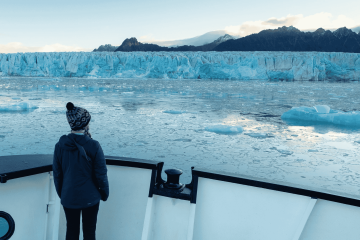
Small Ship Cruising: Small ship expedition cruises are a wonderful way to explore. Choose from Antarctica cruises & Sub-Antarctic Island cruises, Arctic cruises or sail the Patagonian Fiords, Galapagos Islands Cruising or New Zealand’s wonderful Fiordland.
Join an authentic Arctic expedition aboard the charming 12-passenger ship M/S Sjøveien and discover the rugged beauty of Svalbard's wilderness.
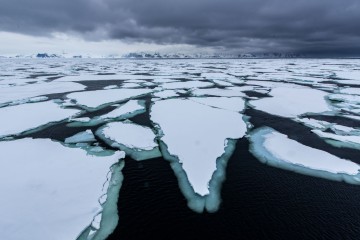
Explore Svalbard, voyage north to the edge of the pack ice on your capable ice-strengthened vessel in search of polar bear, walrus, whales and more.
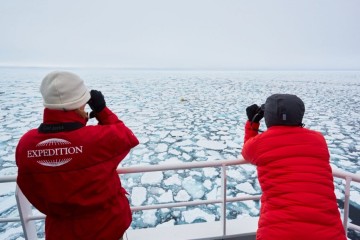
An expedition cruise in North Spitsbergen is perhaps the best opportunity to get active while spotting exotic Arctic wildlife!
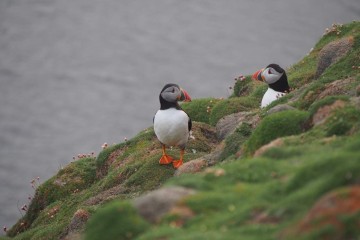
Small Ship Cruising: Small ship expedition cruises are a wonderful way to explore. Choose from Antarctica cruises & Sub-Antarctic Island cruises, Arctic cruises or sail the Patagonian Fiords, Galapagos Islands Cruising or New Zealand’s wonderful Fiordland.
Exploring Spitsbergen via the Faroes and Jan Mayen allows you to venture to some of the most remote islands on Earth.
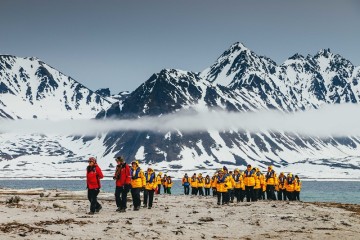
Small Ship Cruising: Small ship expedition cruises are a wonderful way to explore. Choose from Antarctica cruises & Sub-Antarctic Island cruises, Arctic cruises or sail the Patagonian Fiords, Galapagos Islands Cruising or New Zealand’s wonderful Fiordland.
Discover the highlights of Spitsbergen on this exciting 7-day Arctic adventure, polar bears, walrus, artic fox and a stunning array of birds!
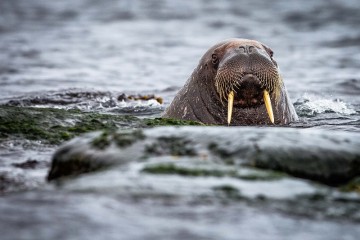
Small Ship Cruising: Small ship expedition cruises are a wonderful way to explore. Choose from Antarctica cruises & Sub-Antarctic Island cruises, Arctic cruises or sail the Patagonian Fiords, Galapagos Islands Cruising or New Zealand’s wonderful Fiordland.
Named one of National Geographic Traveler’s 50 Tours of a Lifetime, this Arctic adventure will see you exploring Iceland, Greenland and Spitsbergen.

Small Ship Cruising: Small ship expedition cruises are a wonderful way to explore. Choose from Antarctica cruises & Sub-Antarctic Island cruises, Arctic cruises or sail the Patagonian Fiords, Galapagos Islands Cruising or New Zealand’s wonderful Fiordland.
Explore the wildlife and landscapes of Spitsbergen, the largest island of the Svalbard archipelago; home of the polar bear, walrus, and few people!
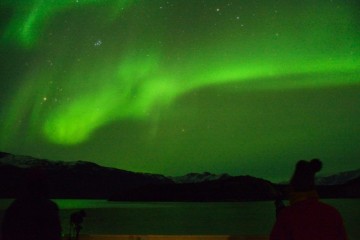
Cruise Spitsbergen and Northeast Greenland in search of seals, whales, polar bears, and the Northern Lights.
While you're up there, you may as well see it all. On a circumnavigation tour, you will explore endless fjords and landing sites for hiking, kayaking or perhaps traversing a glacier. Ask our destination expert, Tara Sutherland, about this cruise.
See Circumnavigate Svalbard Tours HereSpitsbergen is one of the best places to spot polar bears with around 3000 individuals. They are more common on the islands to the east but they can be seen in most places amongst the Archipelago.
See Polar Bears Tours HereOne of the best places to spot the deer is in Isfjorden, argued to be Spitsbergen's largest fjord at around 107km long. Although the Svalbard Reindeer is the smallest of the species the males still develope large antlers between April and July.
See Svalbard Tours HereWith tall cliffs, this is an island that arguably hosts the largest concentrations of sea birds in the Northern Hemisphere and lots of Polar bears - It is also known as Bear Island.
See Bjornoya Tours HereMany suggest this is the most picturesque place in Svalbard. A place where many glaciers meet the sea sending-off huge icebergs. There is a high chance of spotting ringed seals plus if you're really lucky, Beluga whales.
See Kongsfjorden Tours HereThe most common whales spotted in Svalbard are the beluga and minke whale, but it's not uncommon to see humpback and fin whales. The rarer whales that can be spotted include the mighty blue whale and narwhal.
See Whale Watching Tours Here